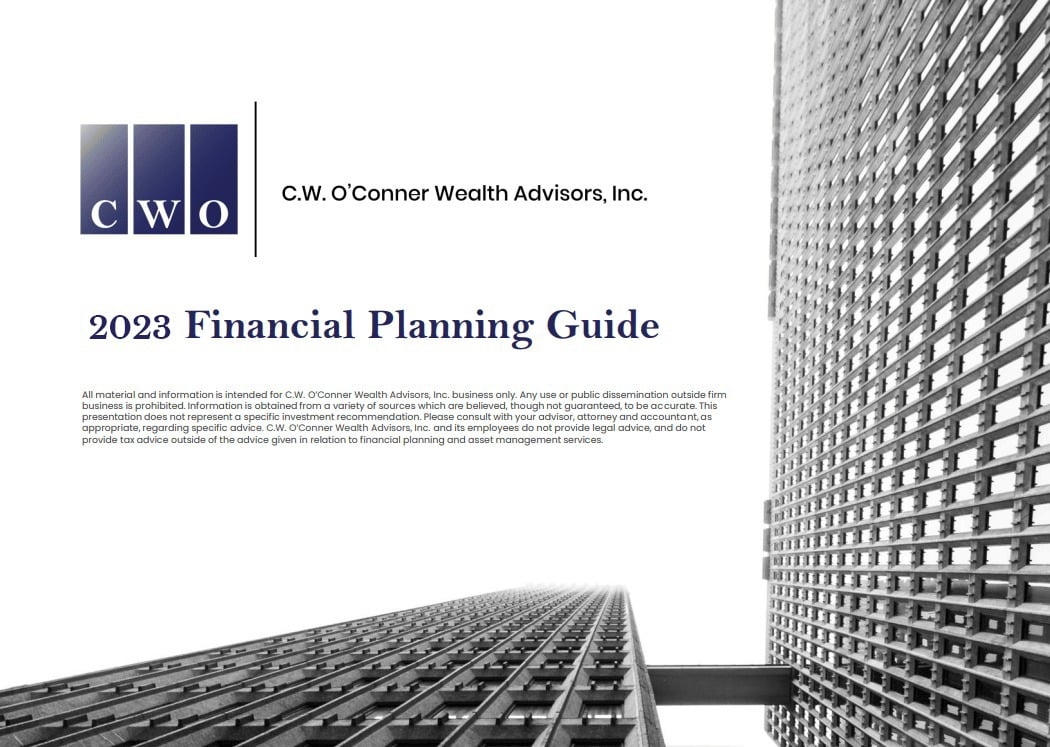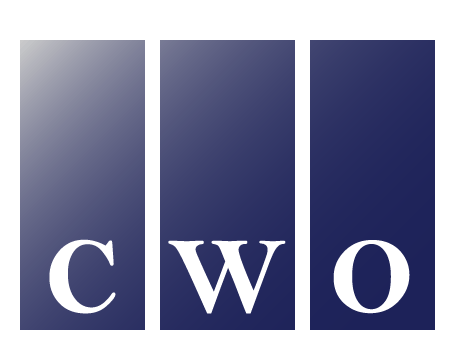
Are you seeking financial stability and retirement peace of mind? You might have encountered various retirement plan options, including the traditional cash balance plan. However, like any financial decision, there are benefits and drawbacks that you must carefully consider.
If you’re a business owner you may be wondering whether a traditional cash balance plan is the right choice for your situation. This article will help you decide by explaining how a cash balance plan works, its pros and cons, and how you can get further help in making your decision.
Table of Contents
- 1 What is a Cash Balance Plan?
- 2 How Does a Cash Balance Plan Work?
- 3 How is a Market-Based Cash Balance Plan Different?
- 4 Traditional Cash Balance Plan Advantages
- 5 Traditional Cash Balance Plan Disadvantages
- 6 Traditional Cash Balance Plan FAQs
- 7 How CW O’Conner Helps With Your Cash Balance Plan
- 8 Download our 2023 Financial Planning Guide
What is a Cash Balance Plan?
A traditional cash balance plan is a type of defined-benefit retirement plan. You can think of it like a pension plan, where you contribute money into an account for you and your employees.
Over time, this account grows with a specified interest rate. This maintains stability and protects the funds from market fluctuations. More importantly, it ensures there’s more money waiting for you and your employees when you retire after your years of service.
How Does a Cash Balance Plan Work?
With a traditional cash balance plan, you contribute a specific percentage of your employee’s salary into an account every year. Additionally, this account earns a predetermined interest rate. You can watch the total balance grow over time, providing you and your employees with a method to save for retirement without needing to manage the investments themselves.
The contributions and interest rates are defined by the plan, and the funds in the plan are managed by professionals. This ensures that your retirement savings grow steadily, even if the stock market is unpredictable.
When an employee retires or departs from your company, they have choices on how to access the funds in their cash balance plan. They might opt to take it as a lump sum or convert it into a stream of consistent payments through an annuity. The decision will be based on their financial needs and preferences at that juncture.
It’s important for employees to understand that the “account balance” they observe isn’t an individual account like a 401(k) plan. It’s a representation of what they would receive if they were to exit their position today. It’s part of a larger pool of funds that you oversee, but the balance provides them with a transparent view of their share.
How is a Market-Based Cash Balance Plan Different?
A market-based cash balance plan bears a resemblance to a traditional cash balance plan, but a primary distinction lies in how interest is credited to the accounts. In a traditional cash balance plan, there’s a predefined guaranteed interest rate. Conversely, with a market-based plan, the interest rate correlates with the performance of specific investments, such as a market index. Consequently, account balances can either increase or decrease depending on the performance of these investments.
Given that the interest rate is market-driven, accounts in a market-based plan might see accelerated growth in prosperous years but could also diminish in value during challenging years. This dynamic introduces a risk component absent in traditional cash balance plans. You’ll notice greater fluctuations in account balances, akin to the variability witnessed in other market investments like 401(k)s.
When an employee retires or departs from your company, the options for disbursing funds in a market-based cash balance plan mirror those in a traditional plan: either as a lump sum or converted into an annuity. However, due to investment performance, the final amount in a market-based plan might exhibit more variability.
While both cash balance plan variants extend the advantage of employer contributions and expert fund management, the market-based plan adds an element of uncertainty to account balances. If you lean towards a predictable and consistent growth model, the traditional cash balance plan may be more suitable. However, if you’re at ease with some level of risk, seeking potentially higher returns, a market-based plan could be a more fitting choice.
Ultimately, the decision between a traditional and a market-based cash balance plan rests on your investment risk tolerance and retirement planning objectives. Both strategies offer pathways to facilitate retirement savings for you and your employees, but they differ in their approaches to interest and growth.
Traditional Cash Balance Plan Advantages
A traditional cash balance plan offers a straightforward way to prepare for retirement. Here are some detailed advantages:
Predictable Growth: With a predetermined interest rate, you can anticipate precisely how much the plan’s account will grow annually.
High Contribution Limits: Compared to other retirement plans, traditional cash balance plans can permit substantially higher contribution limits, allowing for more substantial savings and quicker accumulation of retirement funds for you and your employees.
Favorable Tax Treatment: Because contribution limits are high, so are your tax deductions. For business owners in search of substantial tax deductions while saving for retirement, a cash balance plan provides a great solution.
Professional Management: Financial specialists handle the investments, alleviating the need for you to delve into the complexities of stock or bond selection.
Stable Value: Contrary to market-reliant plans, the value of these accounts remains stable, unaffected by the volatile nature of the stock market.
Flexibility at Retirement: When employees retire or depart from your company, they have the option to select either a lump sum or an annuity. This gives you an opportunity to offer them control over their payout method.
Traditional Cash Balance Plan Disadvantages
While a traditional cash balance plan offers many benefits, there are also some drawbacks to consider. The following are some of the disadvantages:
Limited Growth Potential: The fixed interest rate might be on the conservative side, potentially curbing the growth of the employee accounts when juxtaposed with other investment avenues.
Mandatory Contributions: Generally speaking, a cash balance plan will require the owner to make annual contributions.
High Fees and Expenses: Depending on the structure of the plan you choose, there could be high administration costs and fees associated with establishing and servicing your cash balance plan.
Navigational Complexity: Cash balance plans might be intricate for employers to grasp in comparison to alternative retirement vehicles, potentially complicating their planning and decision-making processes.
Complex Termination: Cash balance plans can be very costly and complex to terminate. It is important to consider these potential ramifications before getting involved with one.
Traditional Cash Balance Plan FAQs
1. What Are The Contribution Limits?
Contribution limits exist in traditional cash balance plans. They dictate how much can be put into the plan each year, and they will vary depending on the contributor’s age. As a rule of thumb, you can expect a contribution limit to be between $100,000 – $400,000.
What’s the Cash Balance Plan Contribution Deadline?
In a traditional cash balance plan, the contribution deadline refers to the date by which the employer must make contributions to the plan for a given year. This deadline is typically the due date of the employer’s tax return for that year.
The deadline ensures that the contributions are made in a timely manner. It helps keep the plan on track and in compliance with regulations. If you have any questions about the plan or contributions, your plan administrator can provide the information you need.
Please Note: The deadline for establishing a cash balance plan and having it be effective for the prior year is March 15th (or September 15th with a filing extension).
2. Traditional Cash Balance Plan vs 401k, What’s the Difference?
Traditional cash balance plans and 401(k)s are both retirement savings options, but they work in very different ways. If you’re trying to decide between them, it’s important to understand the differences. Here’s how they compare:
Contribution Source: With a cash balance plan, you determine and make contributions to you and your employees’ accounts. With a 401(k), employee contributions enter their accounts through payroll deductions, and you may also provide matching contributions.
Investment Control: With a cash balance plan, employees don’t manage the investments; professionals do that for you. With a 401(k), employees select their investments from a list of options you provide through the plan.
Interest and Growth: With a cash balance plan, the accounts of you and your employees grow at least at the guaranteed rate. In contrast, with a 401(k), growth is inherently linked to the investment choices your employees make.
Access to Funds: With a cash balance plan, employees generally can access the funds only upon retirement or their exit from the company. On the other hand, with a 401(k), certain plans might allow employees to take out loans or make early withdrawals under specific criteria.
Tax Treatment: With a cash balance plan, you ensure that contributions and interest are tax-deferred until your employees make a withdrawal. In a 401(k), contributions are typically tax-deferred, and if you offer Roth options, they can provide tax-free withdrawals during retirement.
Risk and Return: In a cash balance plan, there’s a reduced risk profile with guaranteed returns, however, these less-risky returns may come with a more limited upside potential compared to a 401(k). With a 401(k), the landscape of risk and return is driven by the investment avenues your employees choose, which can allow for greater risk profiles and thus greater potential returns.
Distribution Options: At the point of retirement with a cash balance plan, employees can choose between a lump sum or an annuity. With a 401(k), employees decide on the withdrawal method, spanning options like lump sums, annuities, or structured withdrawals.
Overall, traditional cash balance plans offer stability and simplicity but less control. In contrast, 401(k)s offer more control and flexibility but require you to make investment decisions. Understanding these differences can help you choose the option that best aligns with your retirement planning goals and preferences.
3. Can You Have a 401(k) and a Traditional Cash Balance Plan?
Yes, it is possible to have both a 401(k) and a traditional cash balance plan. In fact, many business owners and other high-income professionals use this combination to help maximize their retirement savings.
4. Who is a Traditional Cash Balance Plan Right For?
Cash balance plans can be a great fit for certain types of businesses and their owners. Here are situations where a cash balance plan might be especially beneficial:
High-Income Professionals: These might include doctors, dentists, attorneys, consultants, or accountants. If they are older and have been deferring retirement savings, a cash balance plan can be a way to catch up quickly due to the high contribution limits, especially when combined with a 401(k).
Businesses With Consistent Profits: A cash balance plan requires steady annual contributions. Therefore, businesses with predictable and consistent profits are better suited to ensure they can meet the funding requirements year after year.
Owners Wanting Larger Tax Deductions: Cash balance plans allow for significantly larger annual contribution limits compared to defined contribution plans, especially for older participants. This can provide substantial tax savings for business owners.
Businesses With a Small Group of Highly Compensated Employees: If a business has a relatively small group of highly compensated employees and a larger group of lower-paid staff, a cash balance plan can be combined with a 401(k) or profit-sharing plan to maximize contributions for the higher-paid group while still providing benefits for the broader employee base.
However, it’s essential to remember that cash balance plans come with specific complexities and funding requirements. They might not be suitable for businesses with unpredictable income streams or for those who are not prepared for the commitment and expense associated with the plan’s funding requirements. Before establishing a cash balance plan, you will want to consult with financial advisors, accountants, and actuaries familiar with these types of plans to ensure it’s a good fit for your specific situation.
What’s the Process for Terminating a Cash Balance Plan?
Terminating a traditional cash balance plan is a complex process. It can also be costly. If you’re an employer looking to end such a plan, you’ll need to follow specific steps:
Step 1) Decision and Notification: You must decide to terminate the plan and then notify both your employees and the appropriate regulatory agencies. This notice must follow legal requirements.
Step 2) Freeze the Plan: You’ll need to freeze the plan. This means no new contributions will be made, and no new employees will be added.
Step 3) Pay Out Benefits: You must make sure all participants receive their vested benefits. This can be done through lump sum payments or annuities, depending on the plan’s terms and individual preferences.
Step 4) File Required Documents: You’ll have to file specific documents with the IRS and other regulatory bodies. These filings confirm that the plan has been terminated according to the law.
Step 5) Finalize Termination: The termination process is complete when all benefits have been distributed, and all required filings have been made and approved.
It’s wise to work with legal and financial professionals when going through the termination process. They can guide you through, and ensure compliance with all laws and regulations. If you have questions, consult with your plan administrator or financial advisor to understand your options and rights.
How CW O’Conner Helps With Your Cash Balance Plan
At C.W. O’Conner, we recognize that choosing the right retirement plan is a complex decision that can shape your financial future. As we’ve outlined, traditional cash balance plans offer an array of advantages and disadvantages that require careful consideration. This is where our expertise comes into play.
Our team of seasoned financial advisors can analyze your specific situation, taking into account your financial goals, risk tolerance, and retirement needs. We believe that personalized guidance is essential to ensuring that you make a choice that aligns perfectly with your individual business circumstances.
We know that understanding the intricacies of traditional and market-based cash balance plans might be overwhelming. Our dedicated professionals are here to demystify the process and provide you with the insights and confidence you need to make informed decisions.
Don’t hesitate to reach out to our team to see if a cash balance plan is right for you! Your personalized financial solution is just a conversation away. Schedule a call by using the button below, and let’s embark on this journey together.
The opinions and analysis expressed herein are based on C.W. O’Conner Wealth Advisors, Inc. research and professional experience and are expressed as of the date of this report. Please consult with your advisor, attorney and accountant, as appropriate, regarding specific advice.
Download our 2023 Financial Planning Guide







